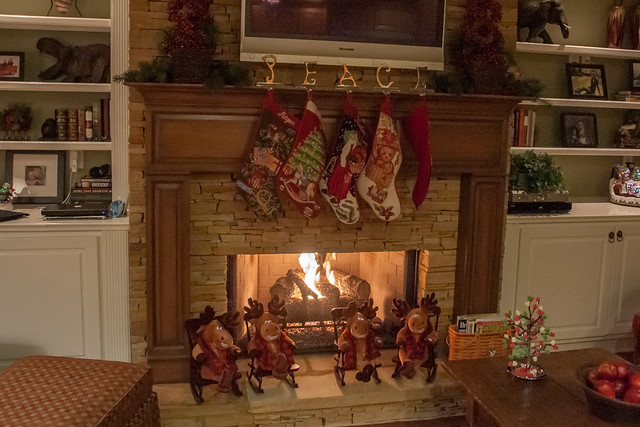The History of Christmas Stockings
In many countries, Christmas presents might be found in a Christmas Stocking, hanging up by a fireplace or at the end of a child's bed.
The custom of hanging stockings comes from the story of St. Nicholas dropping money into a stocking drying by the fireplace or window to help out a poor family.
St. Nicholas putting the bags of gold into a stocking is also where the custom of having a tangerine or satsuma (types of small citrus fruits like small oranges) and often some nuts at the bottom of Christmas stocking. If people couldn't afford gold coins, some golden fruit was a good replacement! Until the last 50/60 years fruits like tangerines or satsumas were quite unusual and special, especially in Europe.
St Nicholas is also the patron saint of pawnbrokers and their sign of three gold balls comes from the story of St Nicholas giving three bags of gold.
It is now more common to find chocolate coins at the bottom of a Christmas stocking, rather than real coins or even a tangerine, clementine or satsuma! You might also now find a candy cane sticking out the top of the stocking.
The biggest Christmas stocking was 51m 35cm (168ft 5.65in) long and 21m 63cm (70ft 11.57in) wide (from the heel to the toe). It was made by the volunteer emergency services organisation Pubblica Assistenza Carrara e Sezioni in Carrara, Tuscany, Italy, on 5th January 2011. Just think how many presents you could fit in that!
In some parts of Italy, children might put a stocking up at Epiphany Eve (5th January) hoping that the Befana (an old lady figure) will bring them some presents.
Leaving out Shoes or Boots rather than Stockings
Stockings aren't the only footwear where you might find presents. In many countries in Europe, including The Netherlands, Belgium and parts of Germany, small presents and sweets/candy for children are left by Sinterklaas in shoes or boots put by a window or door on the 5th/6th December (St Nicholas' Eve and St Nicholas' Day). They might also leave some hay and carrots in their shoes for Sinterklaas's horse.
